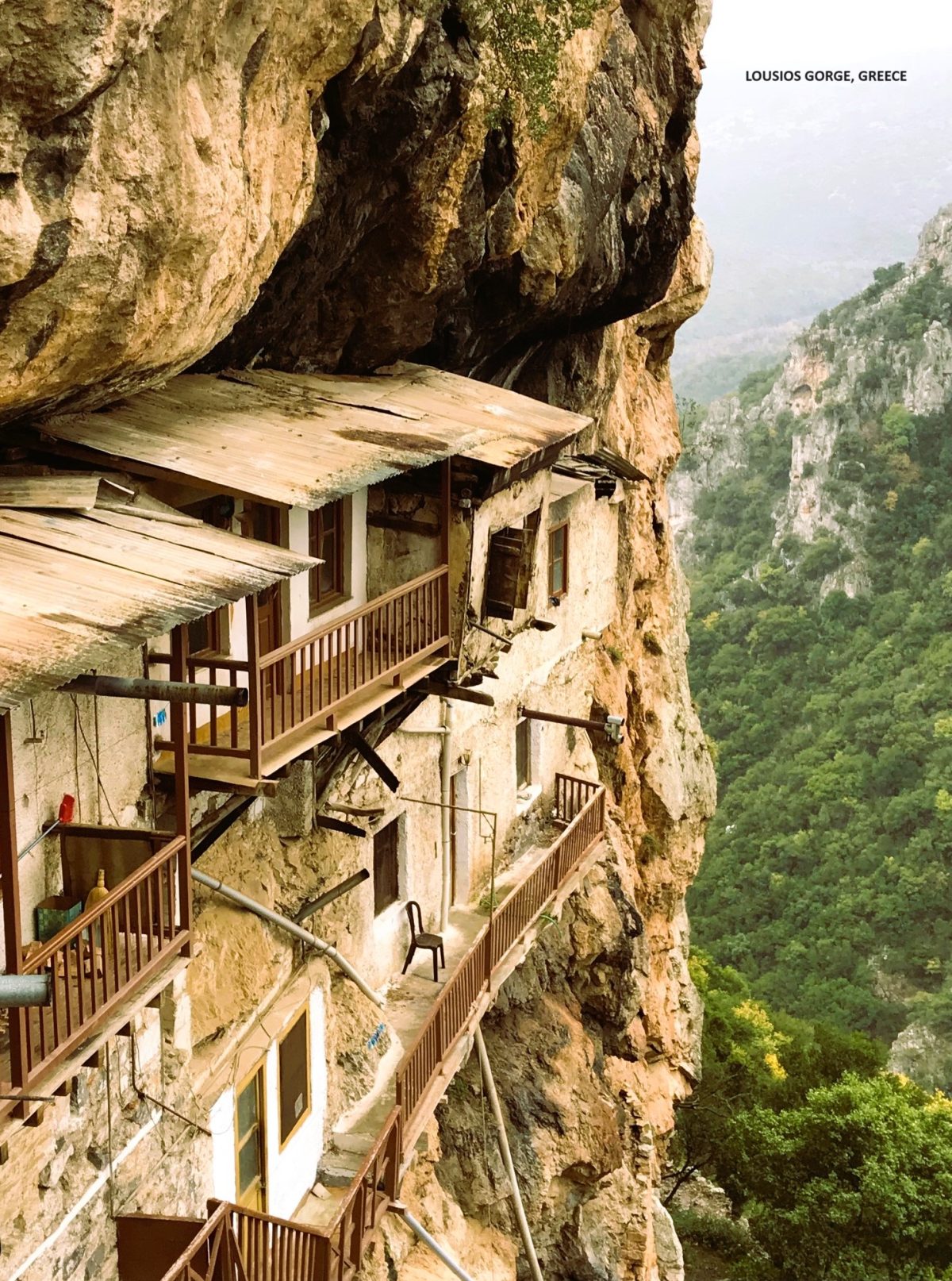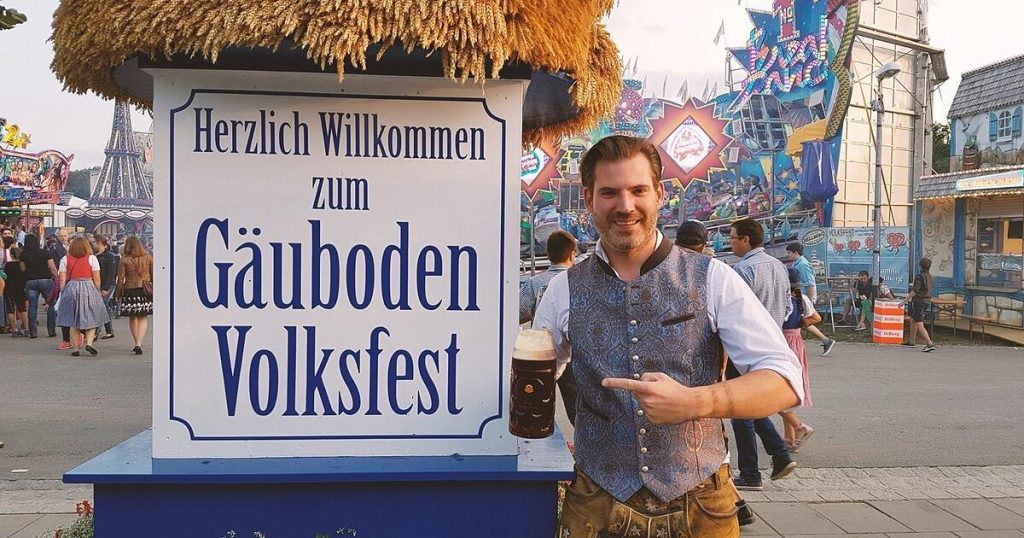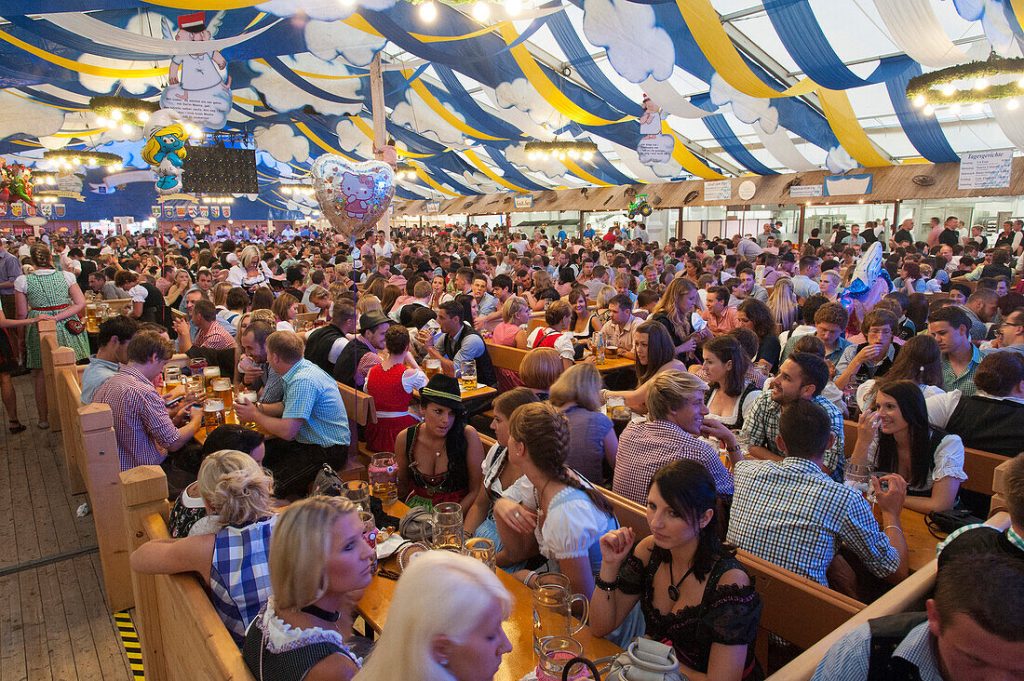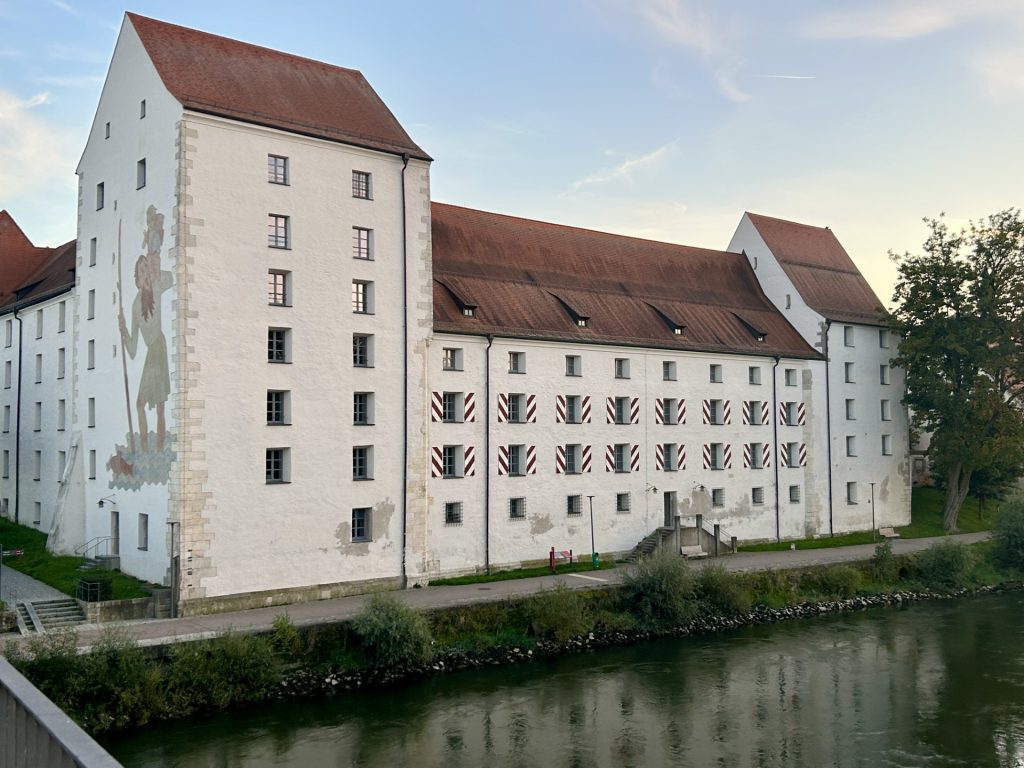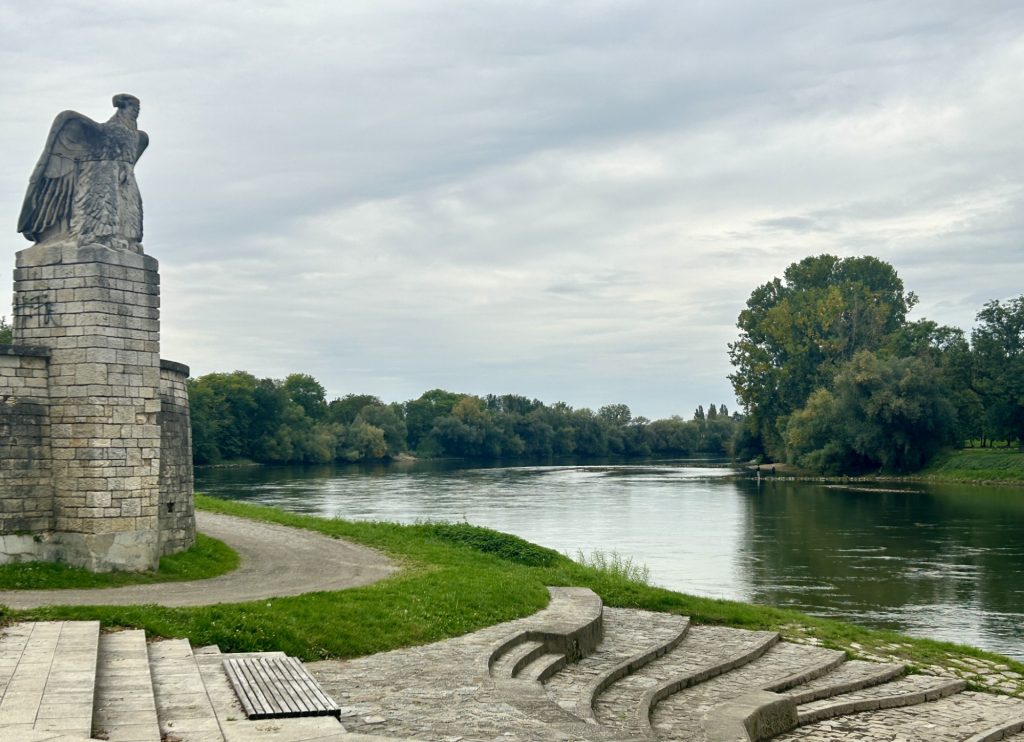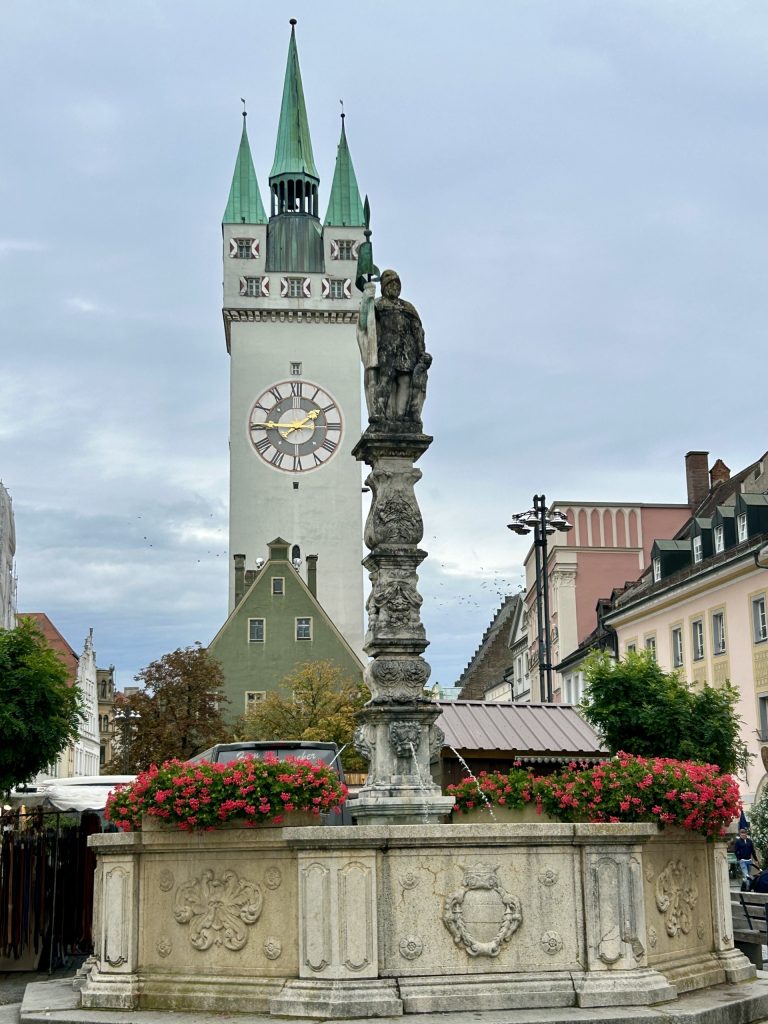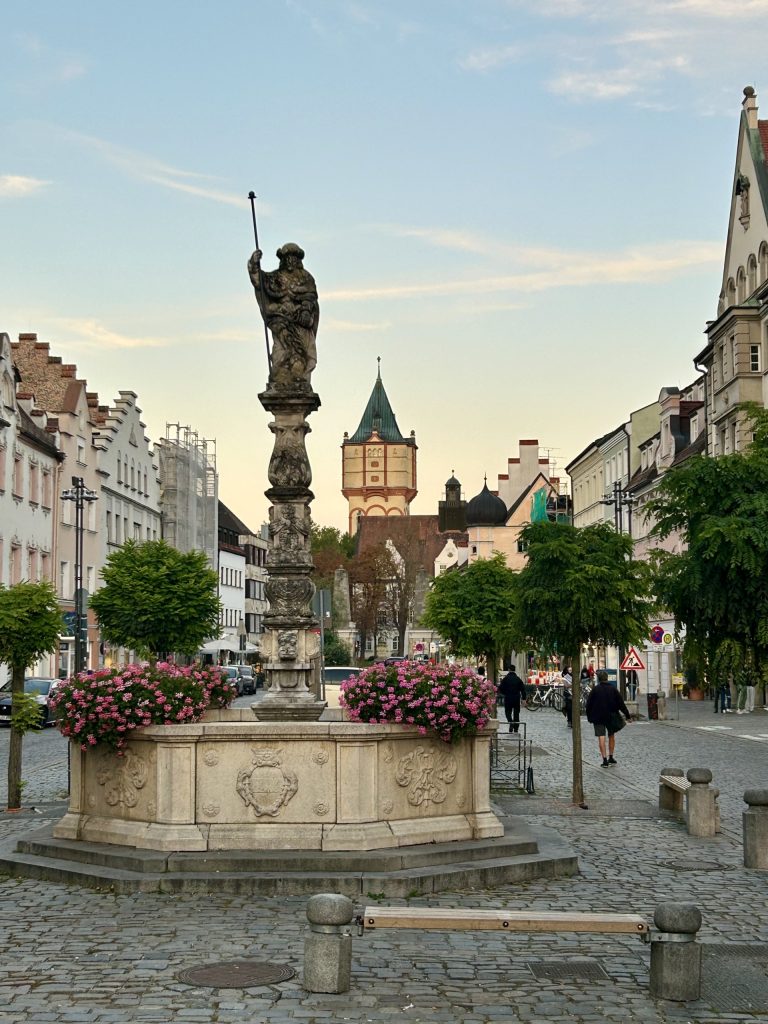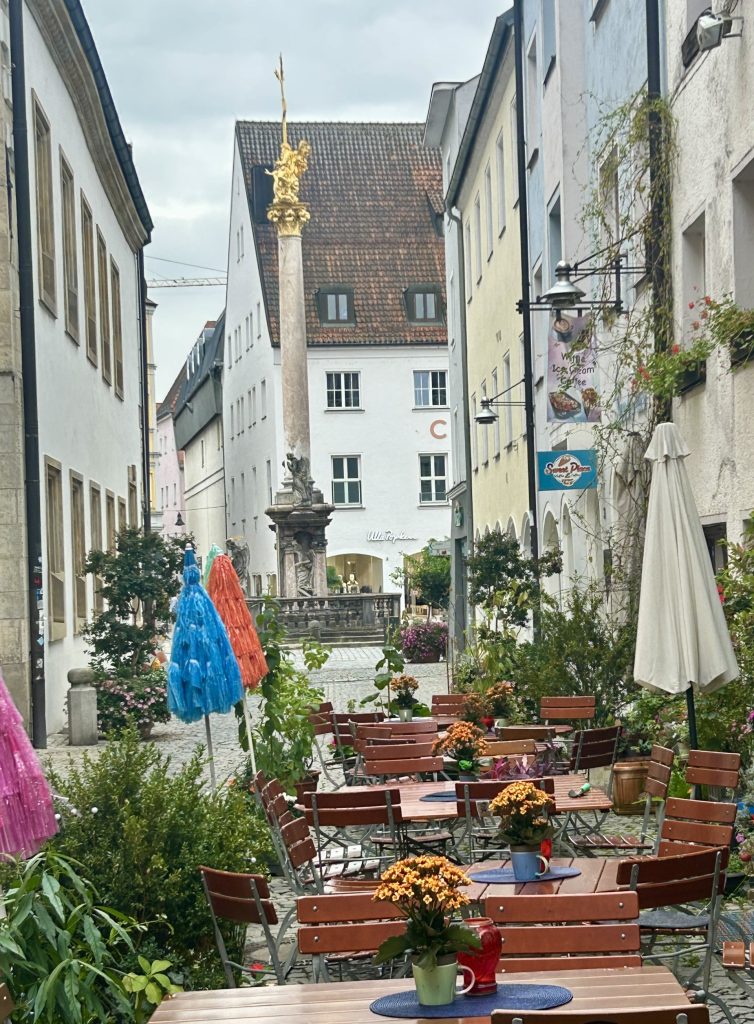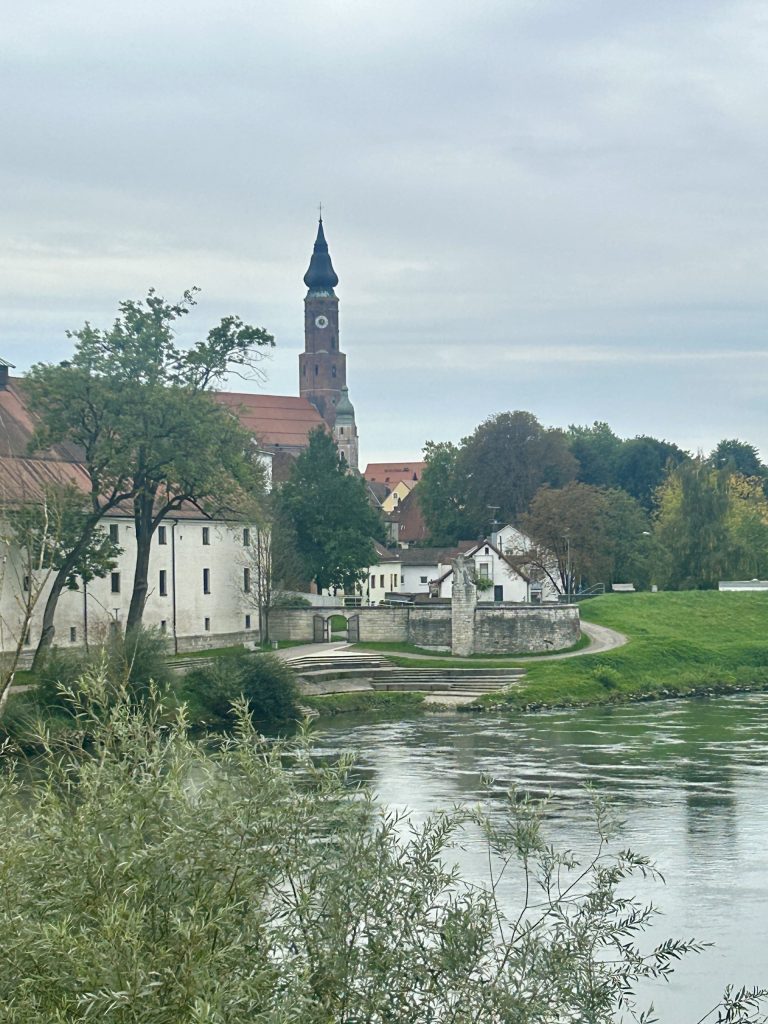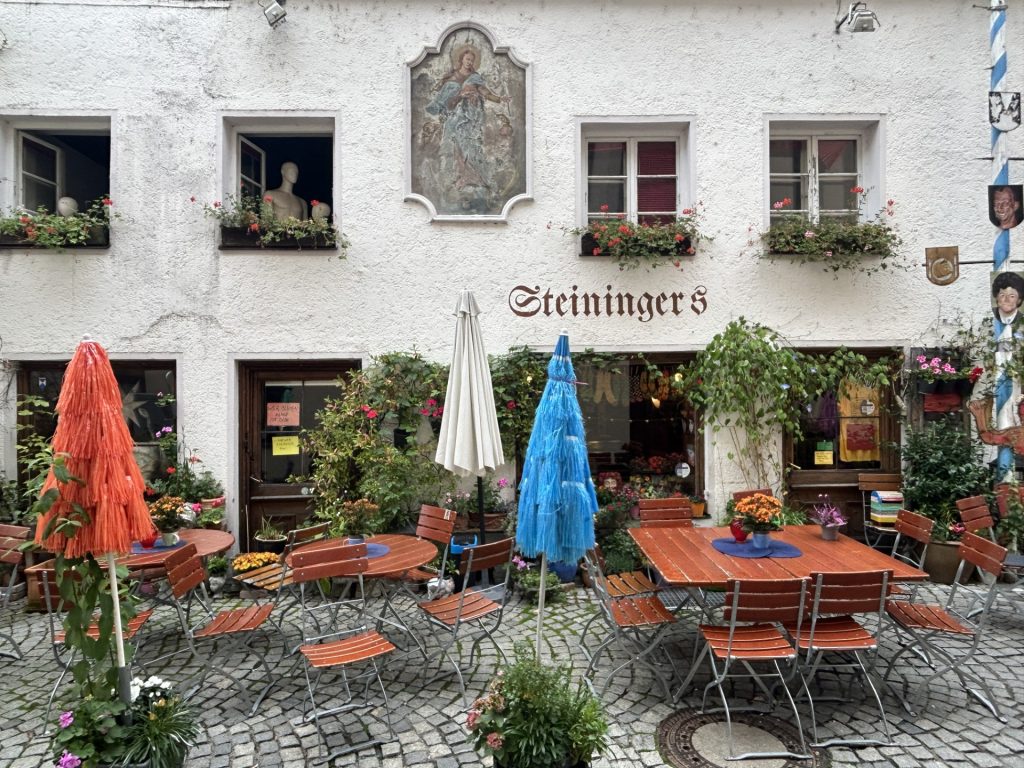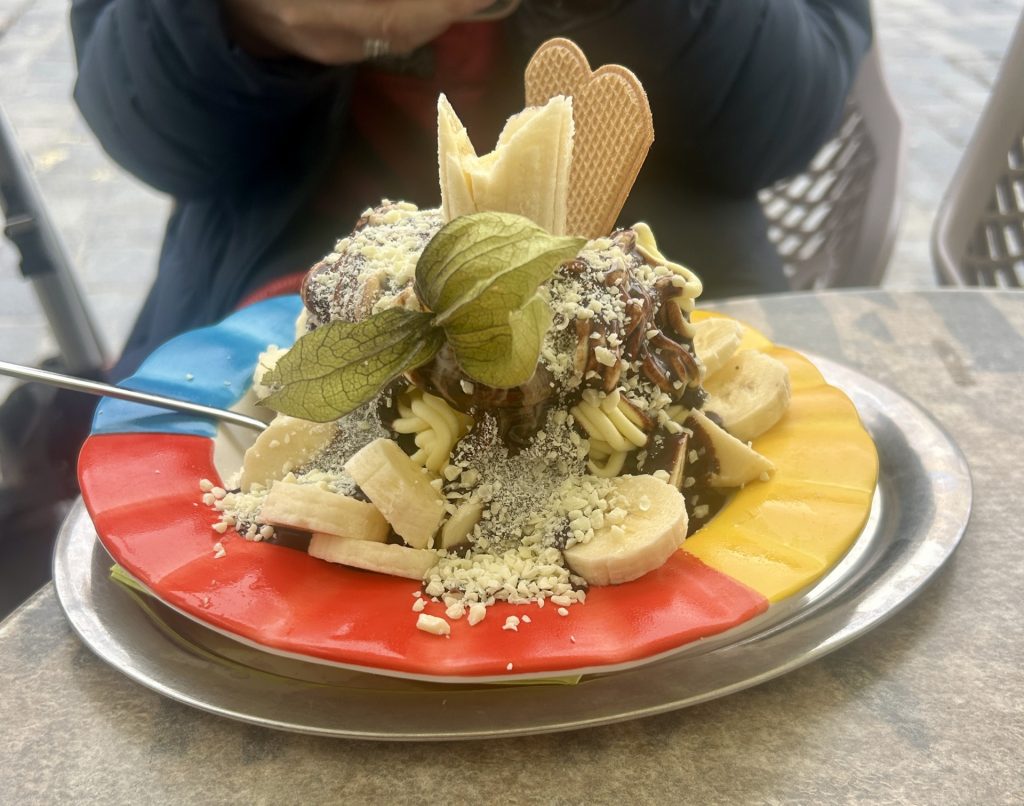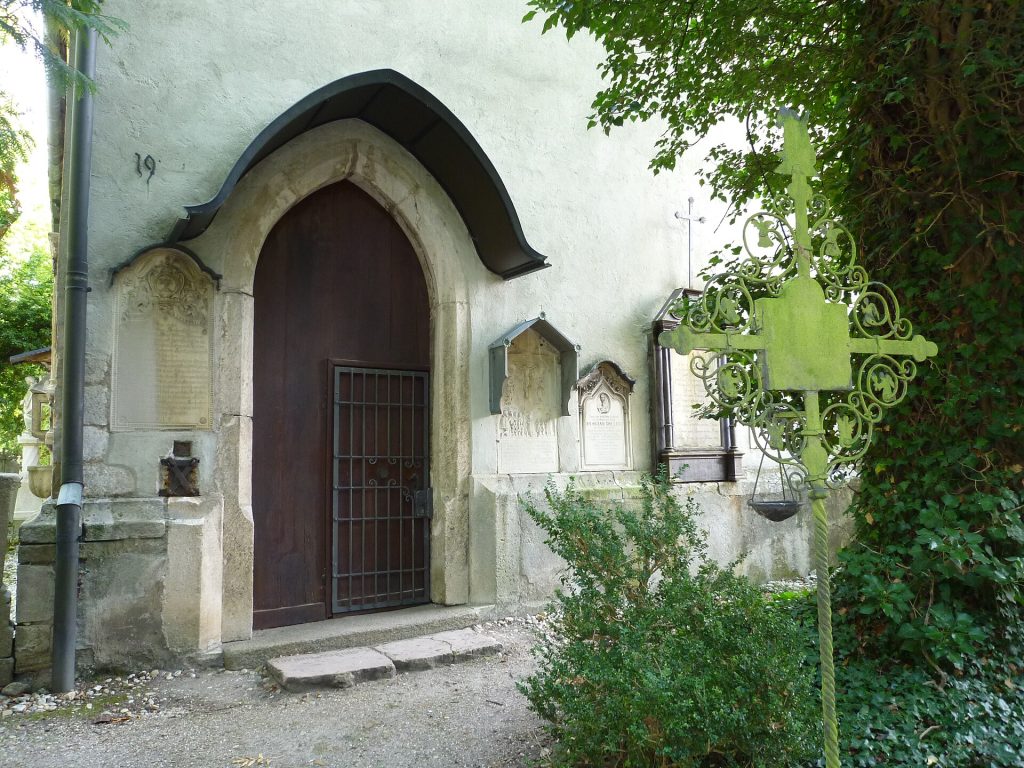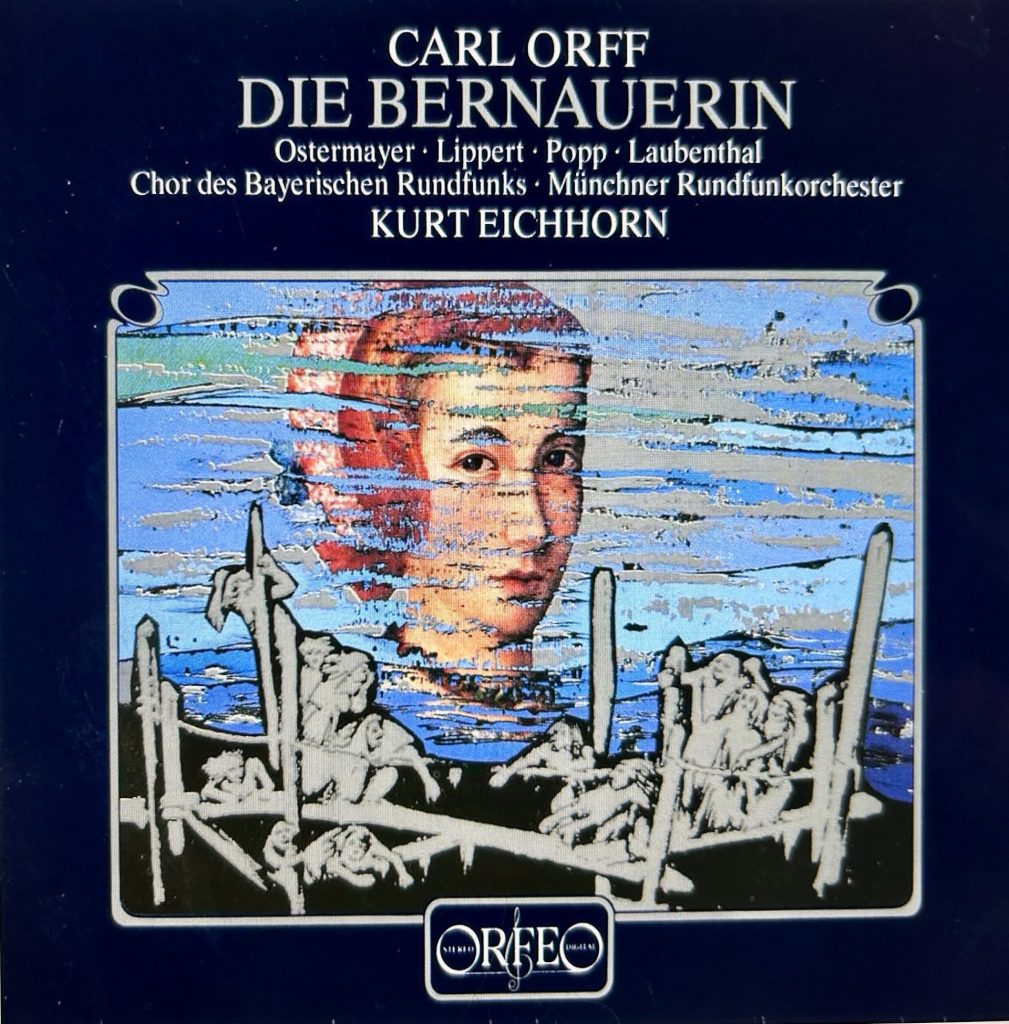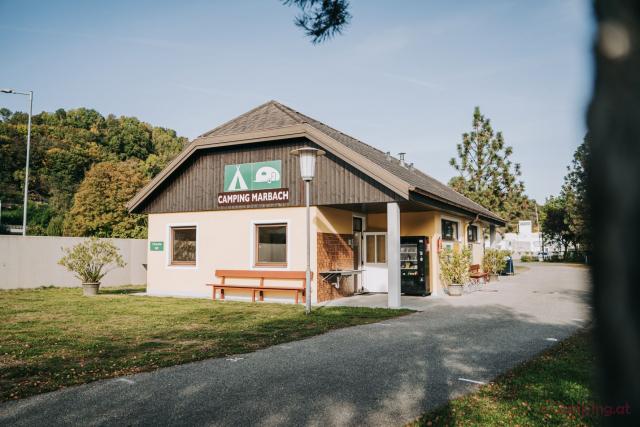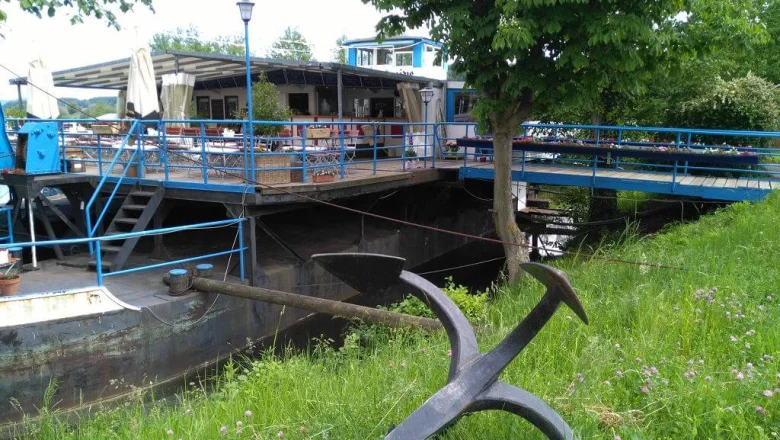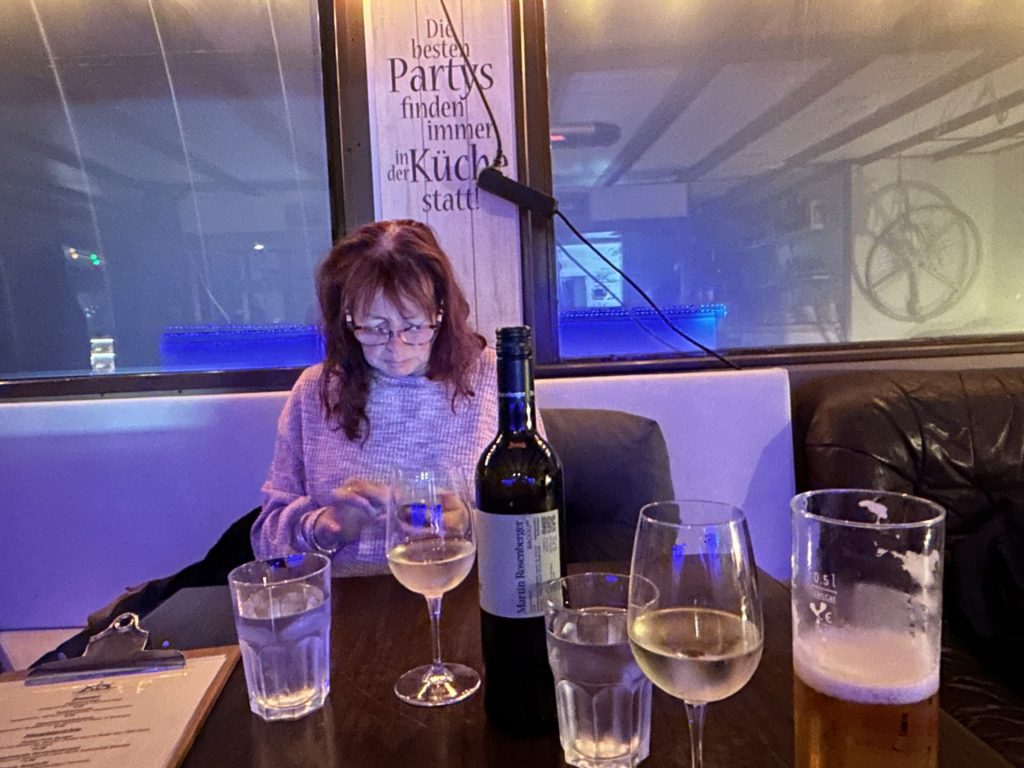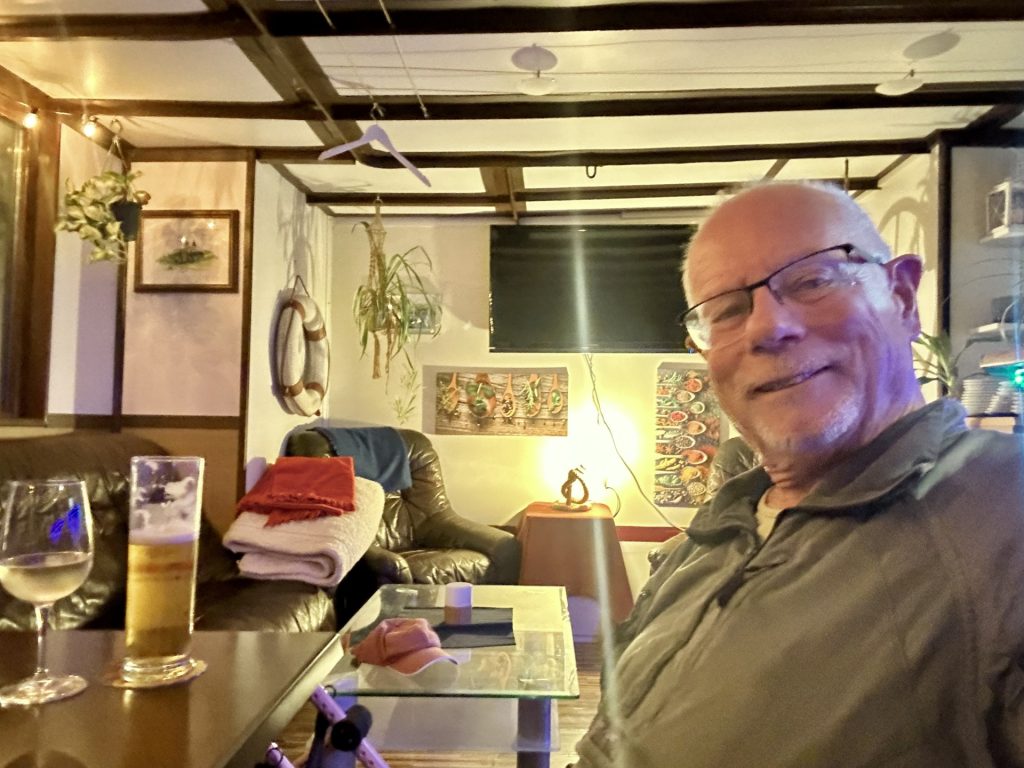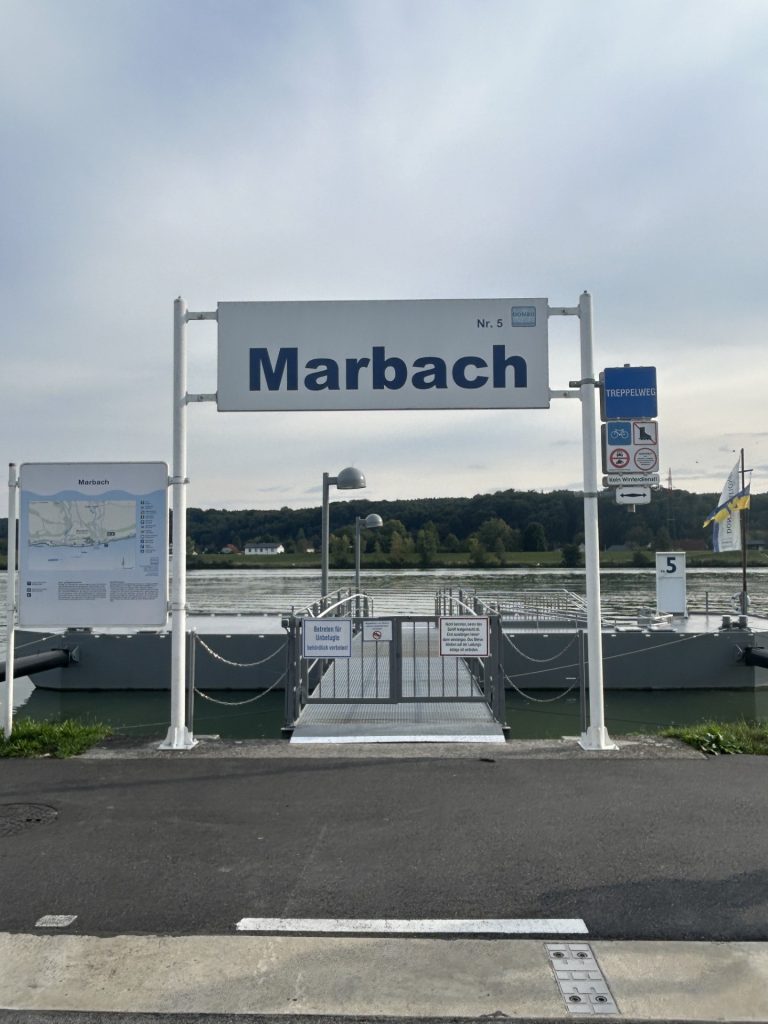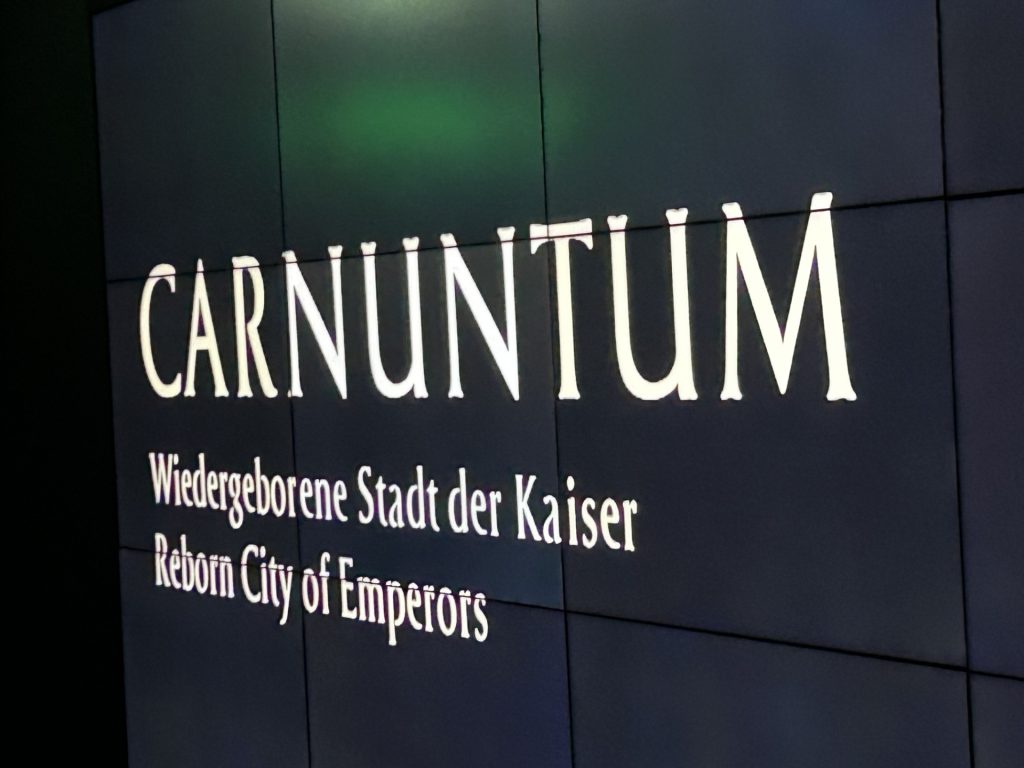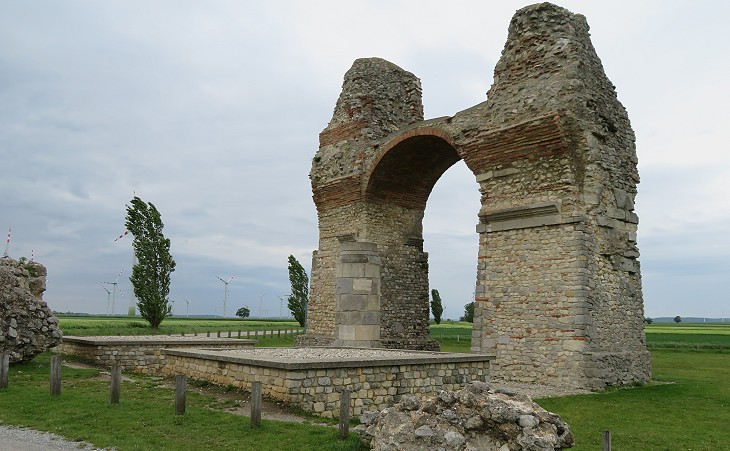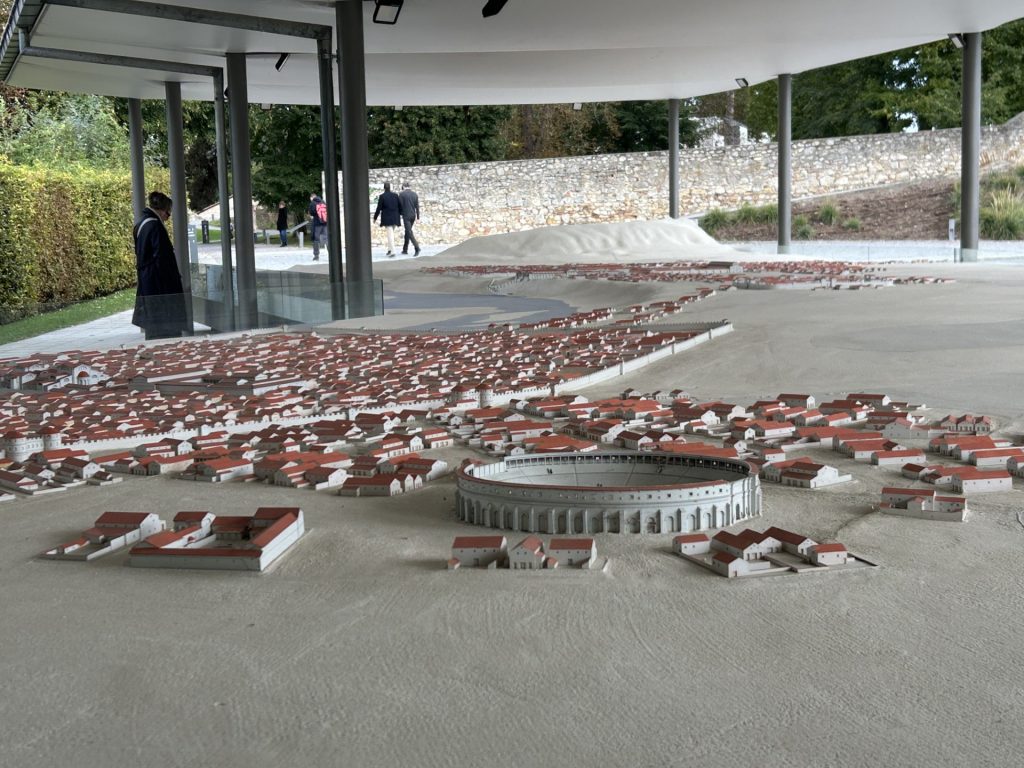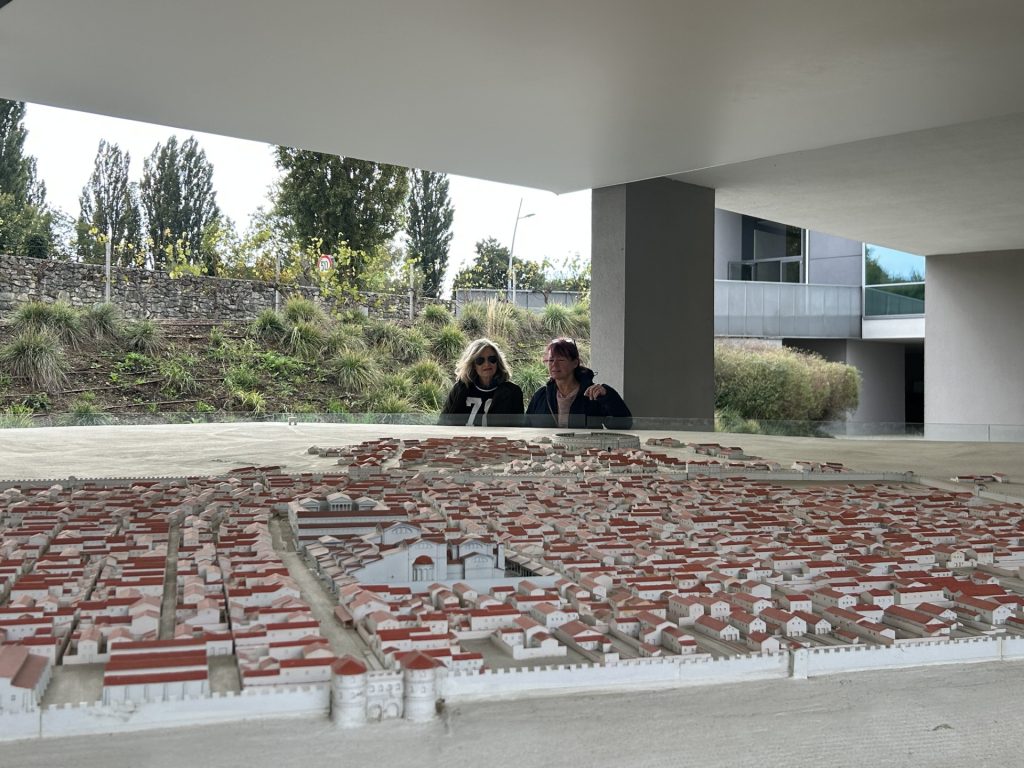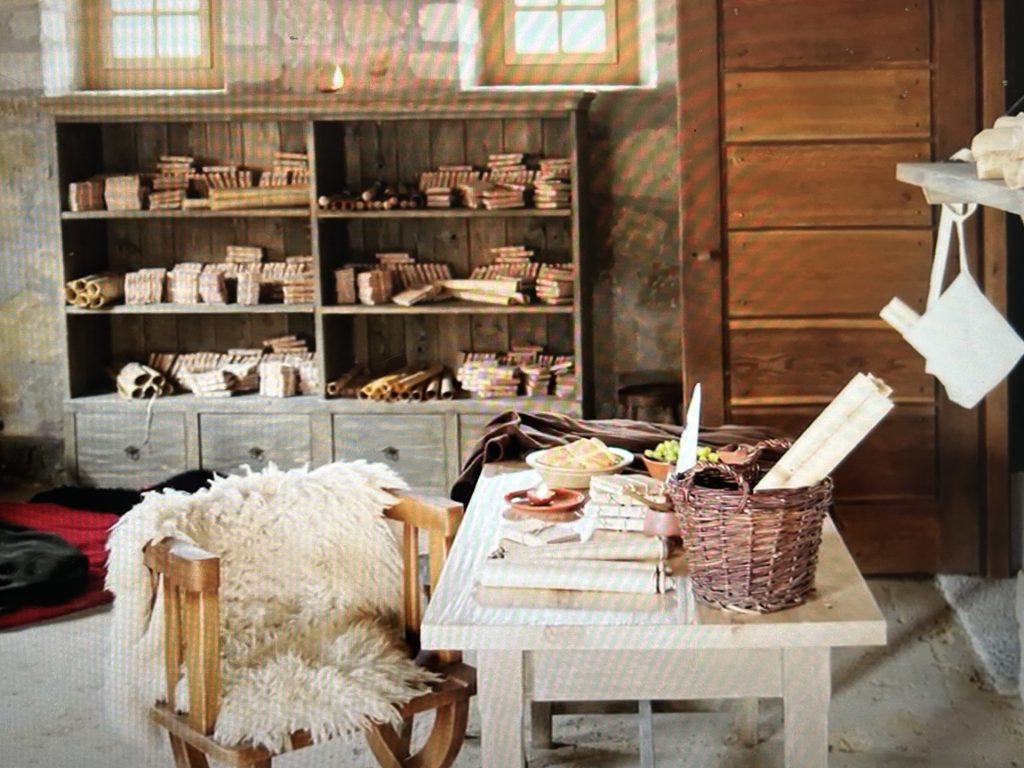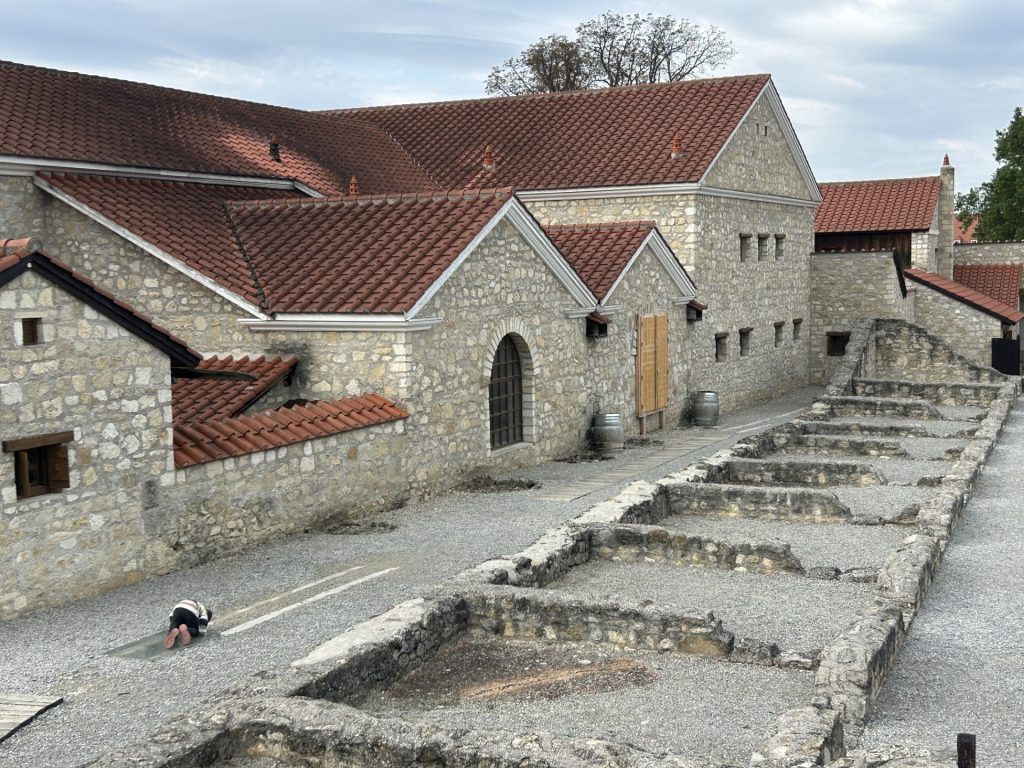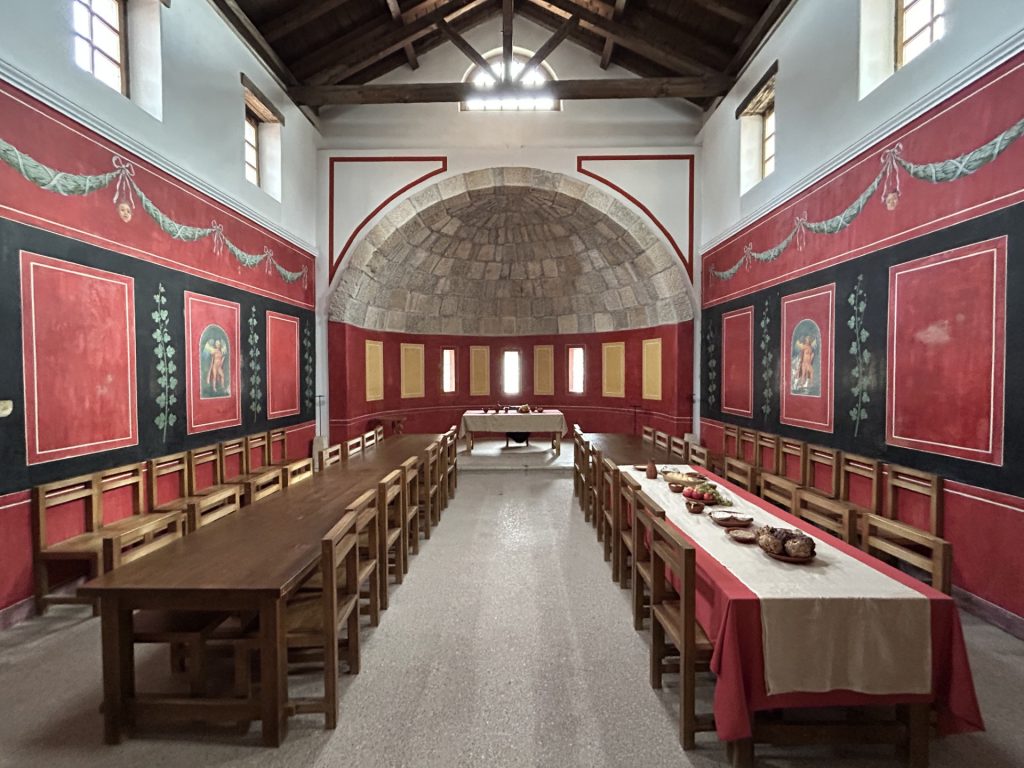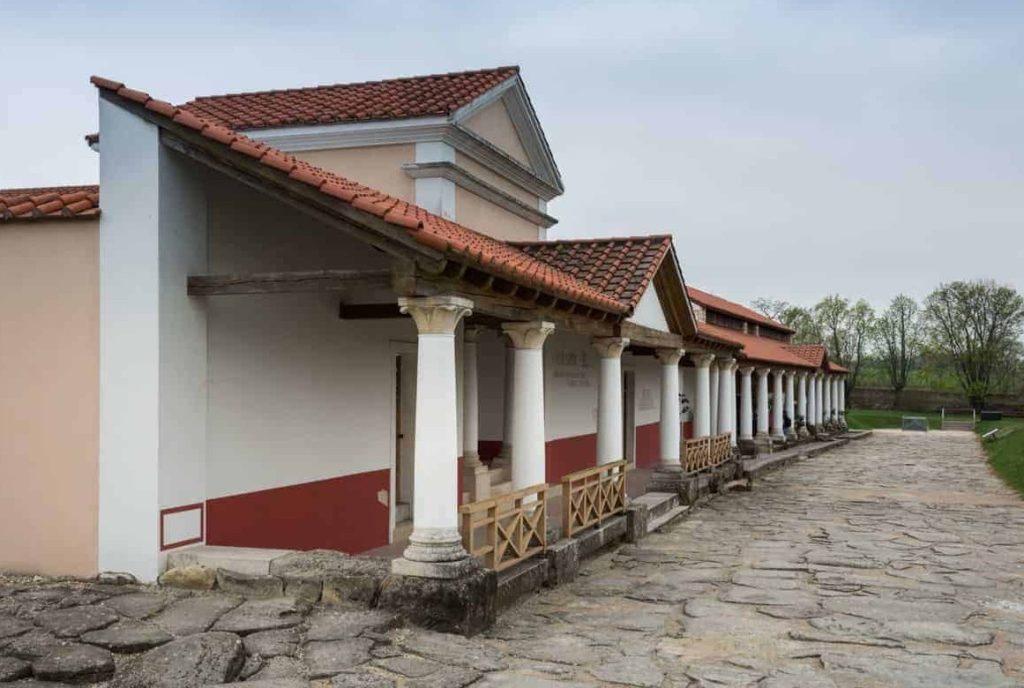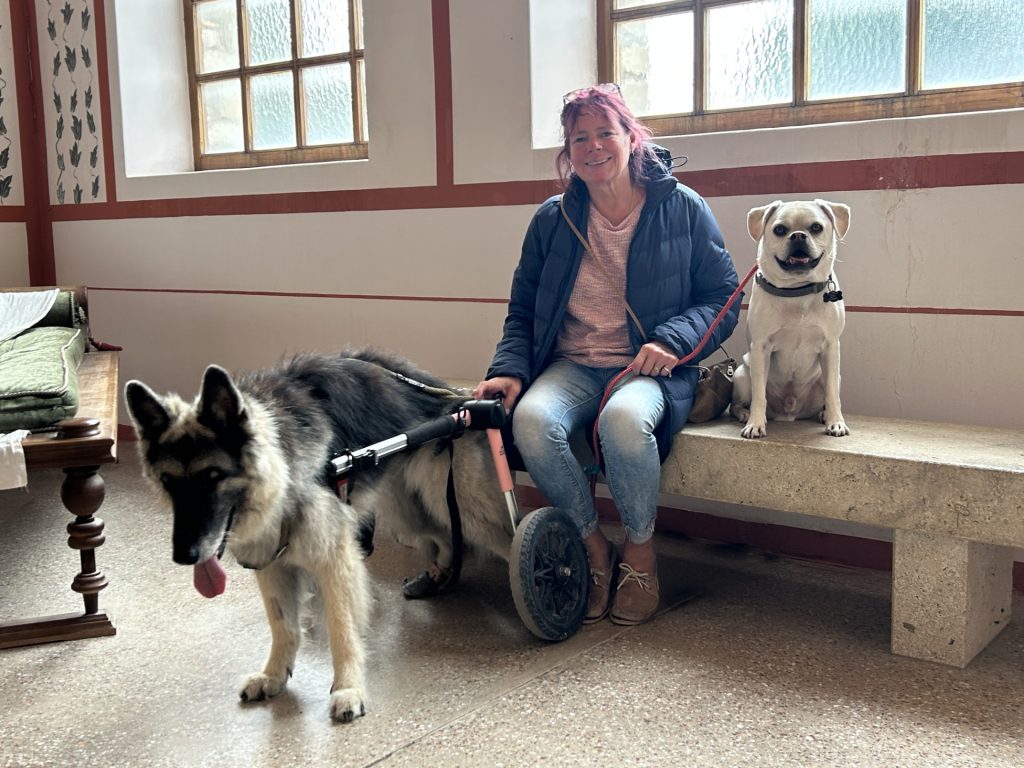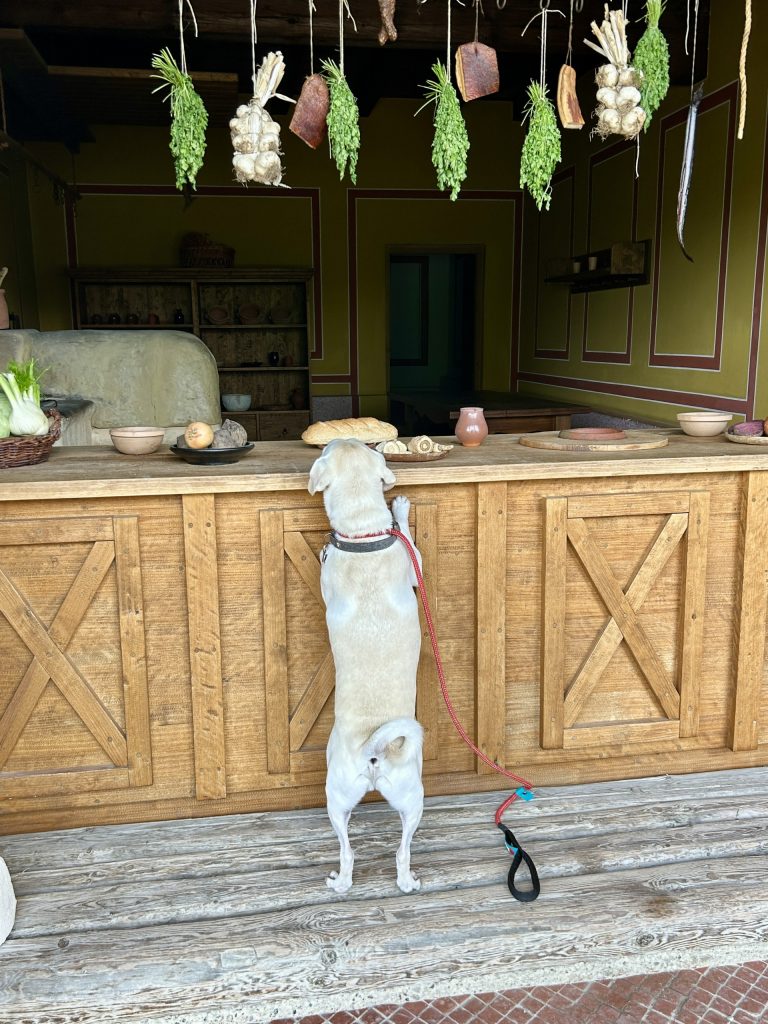We first visited Franconia during Tour 8 (in 2023) and a number of visits since has seen the region become a firm favourite of ours. This stay was a short one; just two days in Lower Franconia exploring the small town of Ochsenfurt and it’s tiny neighbour Frickenhausen Am Main. Ochsenfurt (that’s Oxford in English) sits on the left bank of the River Main some 12 miles south east of Wurzburg while Frickenhausen is a village on the right bank of the river, just a mile east of Ochsenfurt.
We had checked into an outstanding camp site (Knaus Campingpark) which is within easy walking distance of both Ochsenfurt and Frickenhausen and over the two days had sufficient time to properly acquaint ourselves with both places.
We started with Ochsenfurt, a small picturesque town with a little over 11,000 inhabitants. In medieval times the town would most likely have been graded as a city as it was completely surrounded by walls. Much of the walls, together with the original town gates and towers, still stand. Ochsenfurt also had a small castle but; there’s little left of that these days and what there is now serves as a tiny history museum. Inside the walls is a compact town centre of narrow streets and several colourful, well preserved, half timbered buildings; the best examples of which are on the Hauptstrasse and date from between the 16th and 18th centuries.
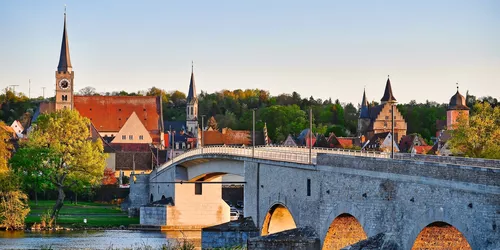
Cross the Main using the Frankischer Marienweg Bridge and you’ll arrive on Bruckenstrasse. The first building to the right of this street is the history museum, known locally as the ‘Schlosschen’ (or ‘Little Castle’) although it’s proper name is the Heimaatmuseum. It is almost all that is left of the old castle and is easily recognised by a stone carving on it’s front inviting you to ‘Visit Beautiful Ochsenfurt’.
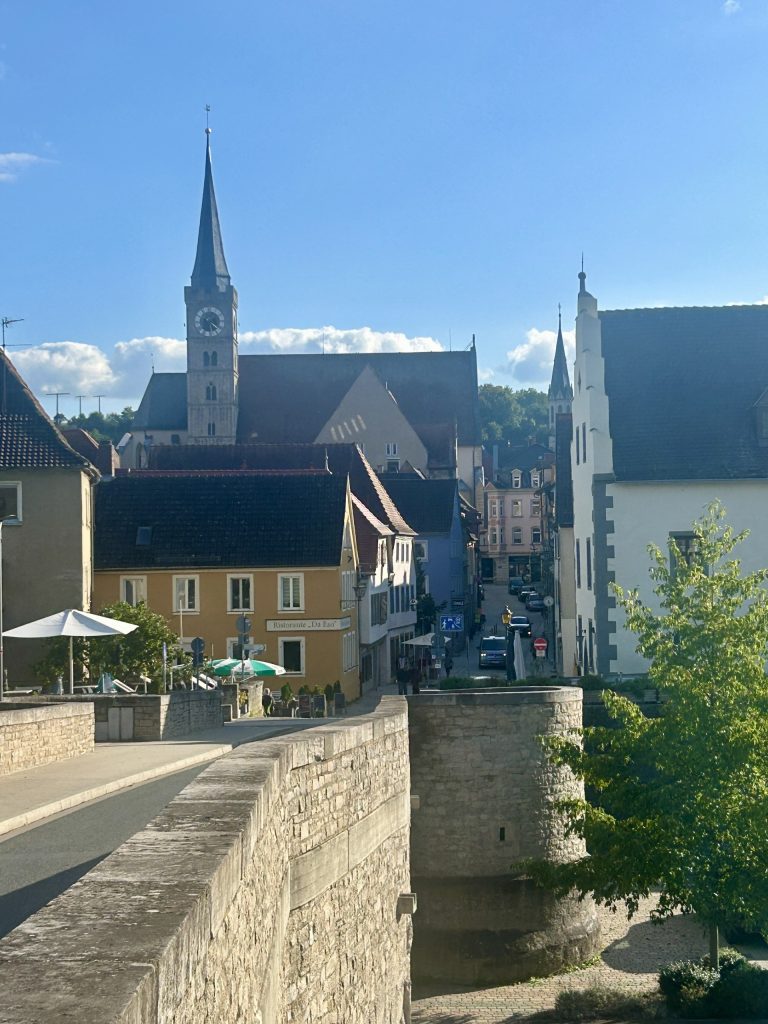
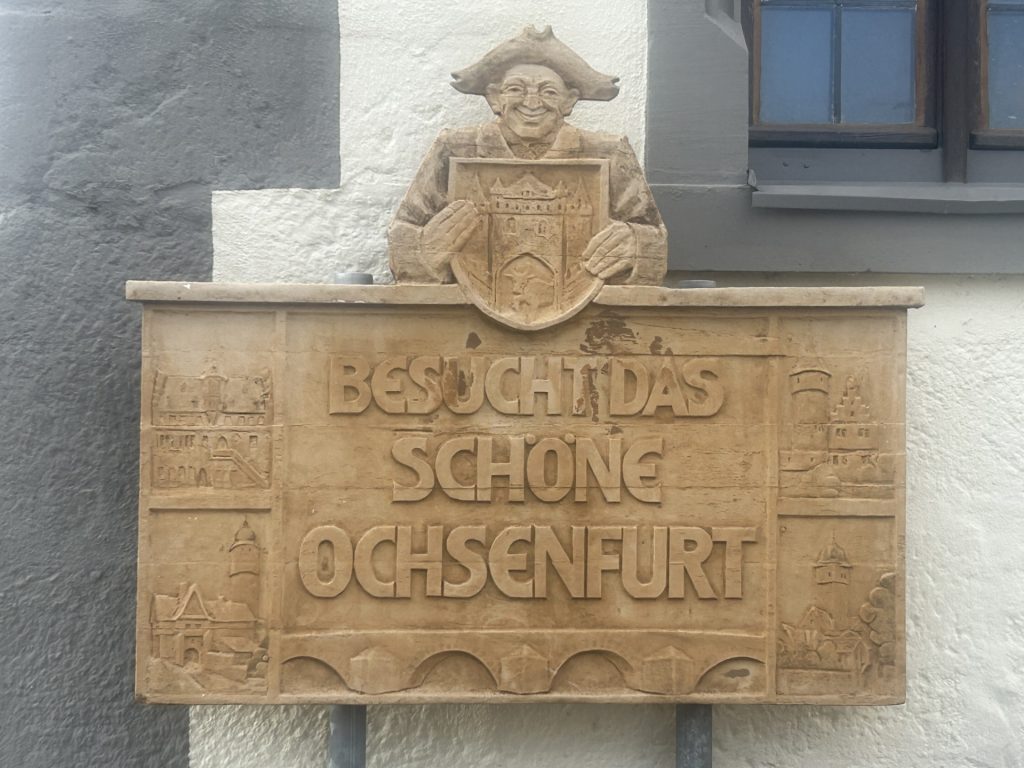
Walk the length of Bruckenstrasse and you’ll soon reach the Hauptstrasse which is Ochsenfurt’s high street and very much the centre of the medieval Old Town (die Alte Stadt). Stretching from the Klingentorturm in the west to the Oberes Tor in the east, the Hauptstrasse runs the length of the Alte Stadt. It’s no longer the largest street in Ochsenfurt but it is certainly the prettiest with it’s rows of half timbered buildings, an unusual water feature (not unlike a small “Bachle”), the Roman Catholic Church of St Andreas or St Andrew’s, and no less than two 15th century town halls. Oh…and there’s plenty of interesting boutique shops and cafe bars to be found on either of Bruckenstrasse or the Hauptstrasse.
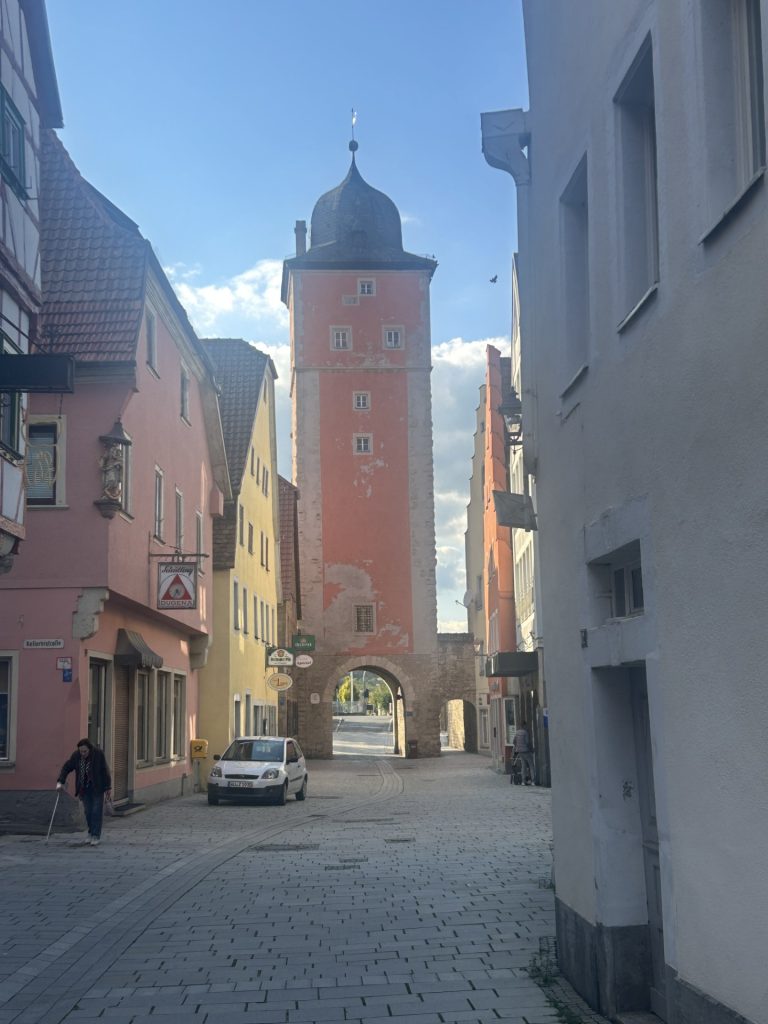
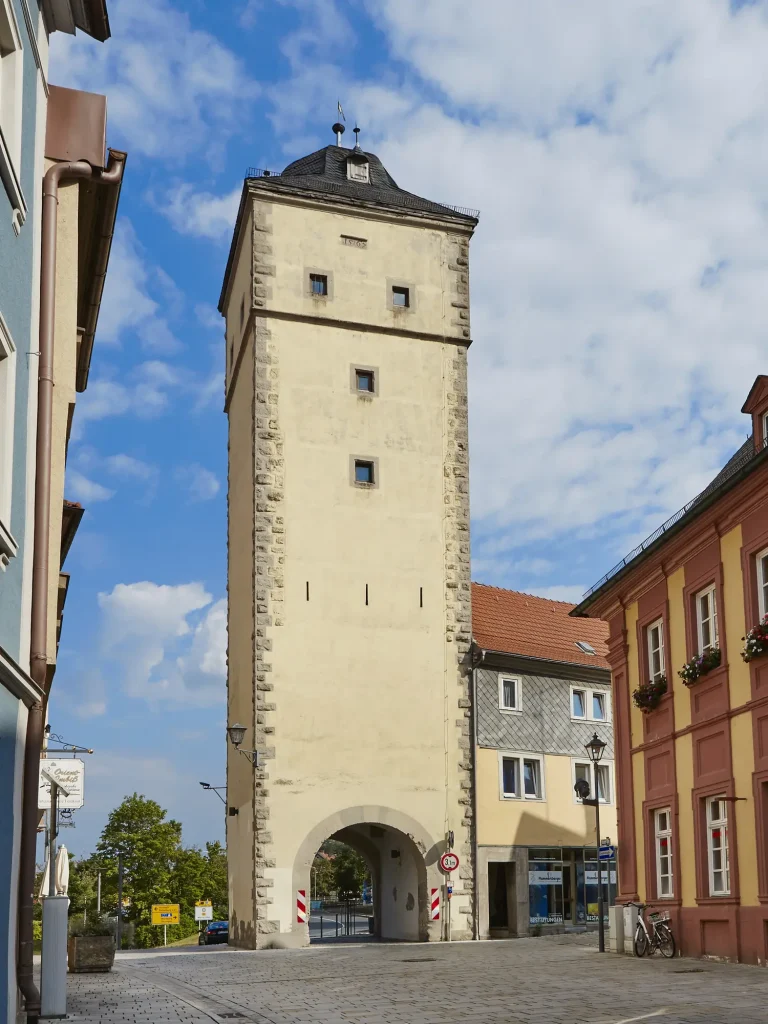
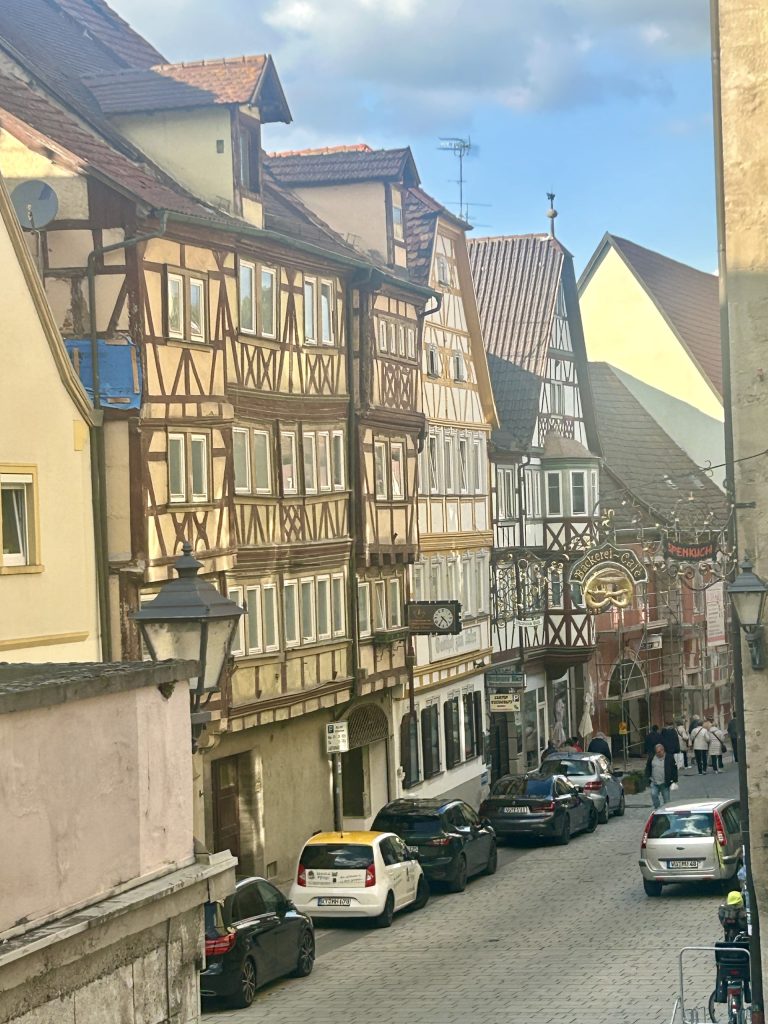

The large red building near the far end of the Hauptstrasse is the Rathaus (town hall). Built in 1497 it is actually known as the ‘new’ town hall. The older town hall, on the corner of Bruckenstrasse and Hauptstrasse, isn’t much older but it was deemed too small and now houses the town library and a small cafe. The new town hall is easily recognised by it’s colour and it’s intricate clock tower. The tower comes to life every hour on the hour with the skeleton moving, the oxen bumping their heads together and some of the windows opening to reveal the faces of councillors looking out over the town. The show is all too brief but still impressive.
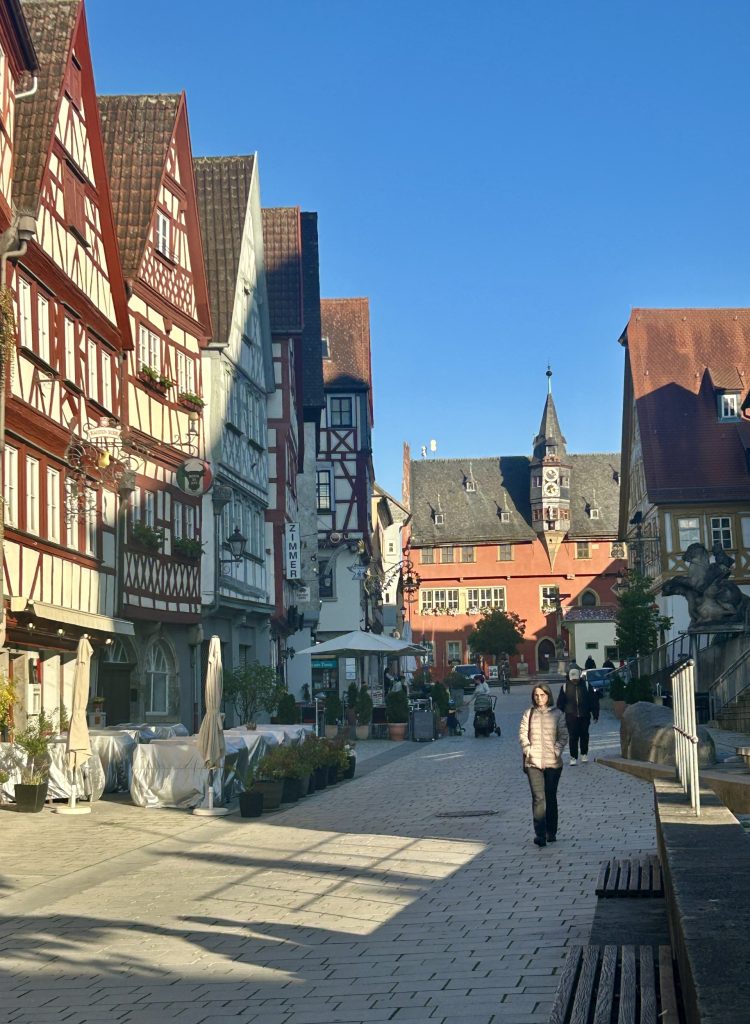

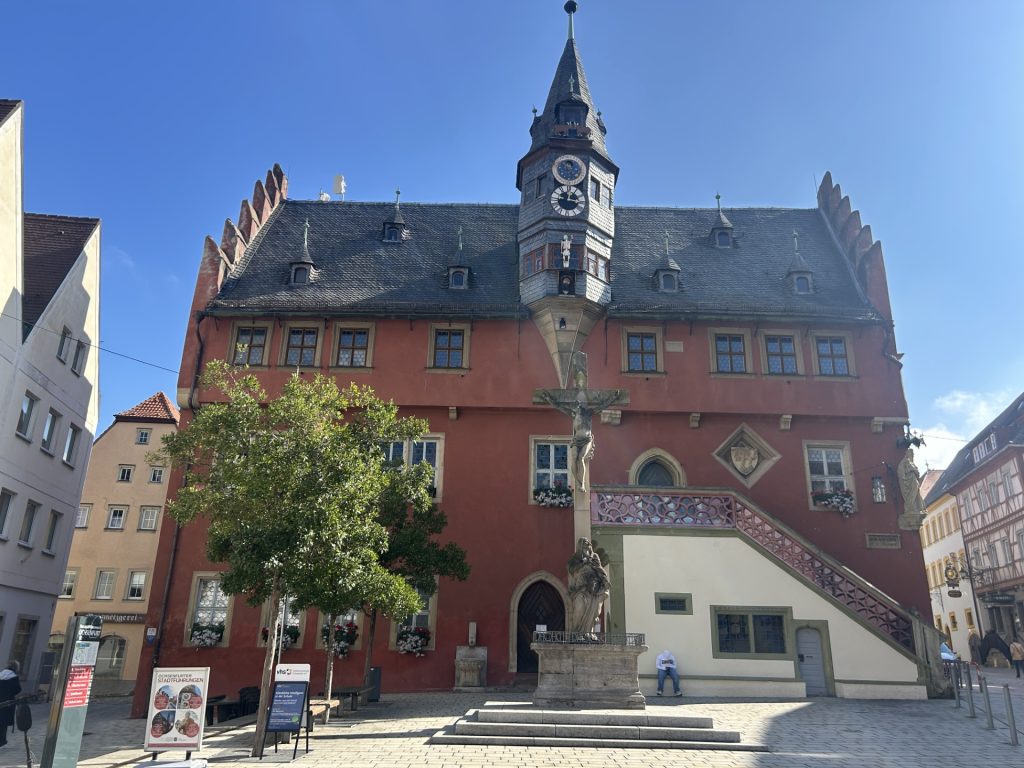
Also on the Hauptstrasse is the Roman Catholic Church of Saint Andreas (Saint Andrew’s in English), parts of which date back to the late 13th century. It’s big and impressive and towers over every other building in the old town. A couple of chaps started practising on the church organ while I was there and, I don’t know what music they were playing but, the rich resonant tones of the organ filled the church with such grandeur and joy. I’d never thought about this before but, all too often, these incredible and often magnificent looking instruments are used to play such sombre or solemn music. What a waste.


I made two trips into Ochsenfurt that first day. One on my own which ended with a couple of cold beers in a small bar on Bruckenstrasse, opposite the Schlossen. The second was with Vanya (and our dogs) and ended with a wine tasting session back at our camp site. Franconia is renowned for both it’s wines and it’s beers. There are many vineyards in the area but the great majority are on the Frickenhausen side of the Main while the breweries are on the Ochsenfurt side. Indeed, despite it’s small size, Ochsenfurt has two private breweries each of which date back to the 19th century. One is the Privatbrauerei Oechsner (which produces a very good Pils) and the other is the Gehring Brauerie, which beer I have yet to taste. Germany is well known for it’s many beers but few know that the Franconia region has the largest concentration of breweries anywhere in the country.
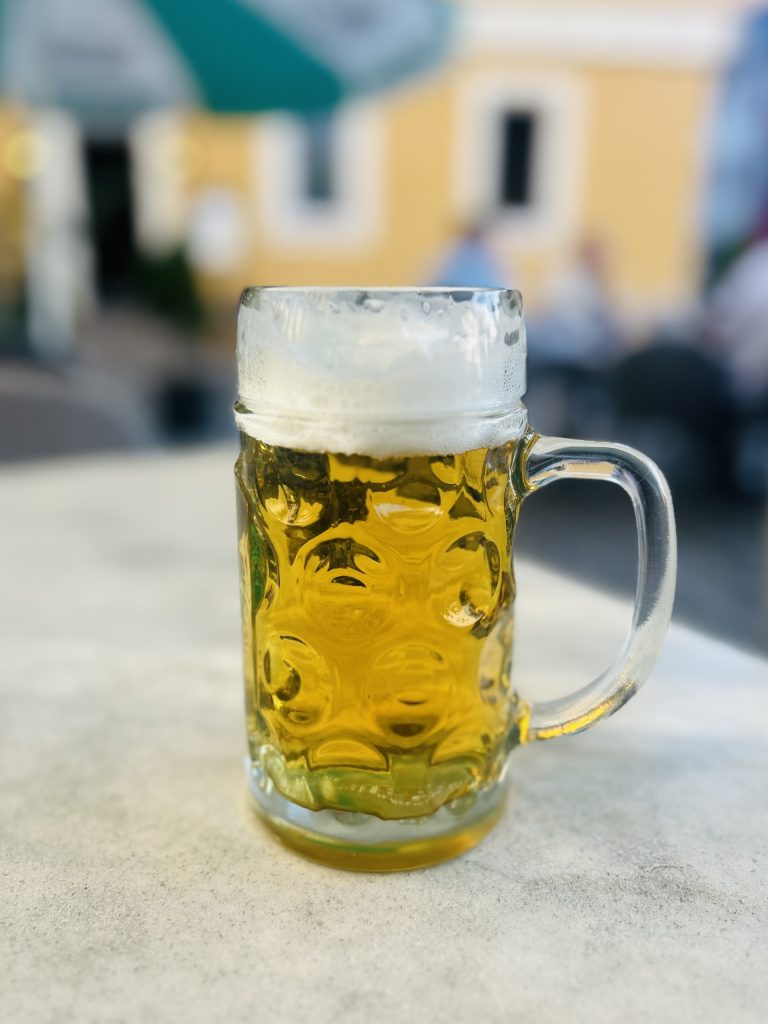

A word or two about the Knaus camp site we were staying at. There are currently more than 20 Knaus camp sites across Germany. I don’t know whether they are all owned and operated by the same company or if they are simply part of a collective but; from what I have read about them they are all quite unique. They all appear to be of a high standard in terms of facilities, fixtures and fittings but attractions at each camp vary enormously and are often aligned with local interests and/or amenities. Some will appeal more to young families; others to those whose children have grown and flown. We fit more into the latter category (empty nesters) and this particular site on Frickenhauser Strasse appealed to us not least because the friendly and very welcoming management team has formed an association with a local winegrower who happily visits on a daily basis to conduct wine tastings. We loved it and we also liked the onsite restaurant.

